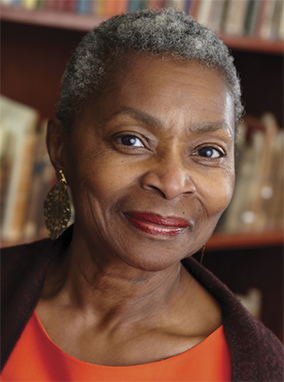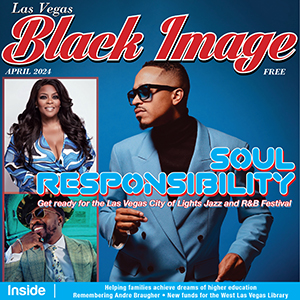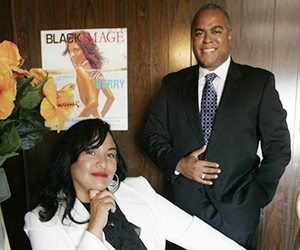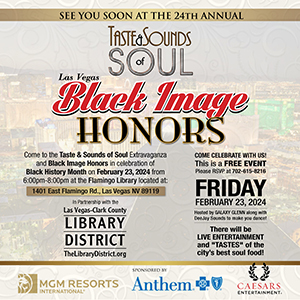HISTORIC BLACK VEGAS | Las Vegas’ African-American Timeline: 1941-1960
January 17, 2023 by agutting@reviewjournal.com
Filed under Highlights
BY CLAYTEE D. WHITE
We began sharing this timeline of the African-American experience and presence in the Las Vegas Valley with events that started in 1870. This month, in the third installment, we’ll trace an extraordinary 20-year period from WWII-era migration to 1960.
1941: WWII migration; Blacks worked at Basic Magnesium Incorporated (BMI) where manganese ore was processed. This ore would be used to build airplanes, rifles, bullets, and other implements of war. Many Blacks migrated from Fordyce, AK; Tallulah, LA; and several small towns in Mississippi for work in this essential wartime industry.
The Las Vegas Westside became a larger, more complex community with many shacks and tents among homes; population growth was too rapid to keep pace with housing needs.
1943: The U.S. government built Carver Park for Black BMI workers. The design was developed by Black architect Paul R. Williams. Lubertha Johnson was hired as the social director. Carver Park contained 64 units for single male workers, 104 one-bedroom units, 104 two-bedroom units, and 52 three-bedroom apartments. Carver Park opened in October 1943 with a school and recreational hall. By the time that this complex was complete, most Black migrants had found housing in the Westside.
1943: Many vibrant Westside businesses were located on Jackson Avenue along with D, E, and F Streets. Most nightclubs with gaming did business on the Westside from the 1940s through the 1980s. First was Smokey Joe’s Club Alabama founded in May 1943 at 1400-02 F St. The Town Tavern was the final gaming establishment to close in the 2000s.
1952: Marble Manor, federal housing complex opened.
1952: Street paving began on the Westside. Prior to this, there were no paved streets, city sewage service, sidewalks, or street lights.
1954-1955: Moulin Rouge, the first integrated hotel casino, was constructed and opened. Its elegance rivaled properties on the Strip, but the Rouge was located on Bonanza at H Street, in the Westside community.
1954-1955: Berkley Square, the city’s first black middle class housing development, was constructed by architect Paul R. Williams. Financiers included Thomas Berkley, black businessman and attorney from the Bay area. Berkley Square was nominated for a listing on the National Register of Historic Places in 2012. It is currently being researched to determine if Highland Square and Cadillac Arms, also built at this time, were possibly the work of Paul R. Williams.
1960: The Moulin Rouge Agreement was reached on March 26 — a verbal pact establishing integration of public accommodations in Las Vegas.
Bonus: Who is Paul R. Williams? He was the first Black architect allowed to join the American Institute of Architects (AIA). His glamorous homes were sought after by the Hollywood elite. His designs were located in neighborhoods where, in the 1920s–1950s, he could not live because of systemic racism. Williams excelled at his craft by using his genius and his understanding of the era to learn to draft a building upside down. The elegant buildings would come alive as he sat across the desk from his white clientele. Jim Crow did not allow Williams to sit beside them.
Claytee D. White can be reached at (702) 895-2222.







